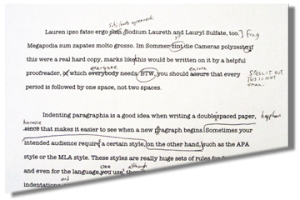 “… [T]he secret of good writing is to strip every sentence to its cleanest components. Every word that serves no function, every long word that could be a short word, every adverb that carries the same meaning that’s already in the verb, every passive construction that leaves the reader unsure of who is doing what …”
“… [T]he secret of good writing is to strip every sentence to its cleanest components. Every word that serves no function, every long word that could be a short word, every adverb that carries the same meaning that’s already in the verb, every passive construction that leaves the reader unsure of who is doing what …”
William Zinsser, On Writing Well, New York: Harper Collins, 1998, 7-8.
Concise writing emerges from multiple drafts of a manuscript. “Redundancy is often a natural result of the drafting process, when the writer, in a rush to get the words out, is, suitably, uncritical. Revision is supposed to catch these problems.”1
So, get all of your ideas on paper and then go back and revise your draft.
Concise writing avoids superfluous words, (i.e., replace “because of the fact” with “because”, “subsequent to” with “after”, in order to “with” to, “until such time as” with “until”. See other Deadwood Phrases.
Concise writing deletes redundant adjectives and adverbs (i.e., carefully analyzed, appropriate information, determine specifically) and eliminates unnecessary prepositional phrases. Identifying prepositions (e.g., of, to) allows you to write more concisely and clearly. See Paramedic Method: A Lesson in Writing Concisely.
Instead of:
“The tremendous growth was mainly a result of the increase of disposable income of people, increased leisure time, and better equipped resort areas catering to all types of skiers.”
… it is more concise to write:
“More disposable income, more leisure time, and better resorts increased the market for ski accessories by 45%.”2
Concise writing improves readability. This may mean combining several short sentences into one long, clearer sentence. It may mean revising a complex, compound sentence into two or more short, clearer sentences.
1. David Nadziejka, Technical Communication, 1994, (41,2), 310.
2. Richard Lanham, Revising Business Prose, Los Angeles: Macm